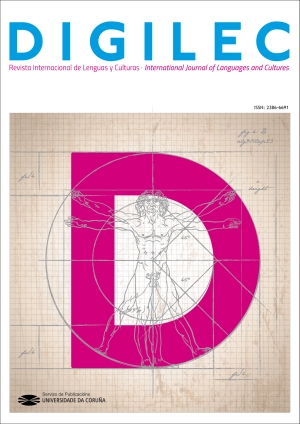Analysis of Mr. Collins’ proposal: Jane Austen’s realism as a strategy for social criticism
Contenu de l'article principal
Résumé
Jane Austen's novels are a faithful portrait of many of the customs and rules of her time’s society. By depicting her sociocultural environment, Austen confers a greater realism to her works and adds coherence to her characters’ attitudes. She also employs realism as a strategy to make a subtle social criticism, highlighting the negative consequences of some of her time’s laws and rules. In the present article, a sociocultural context is offered about clerics, courtship and marriage proposals, and the legal device of the entailment, which will lead to a better understanding of the subsequent analysis of Pride and Prejudice’s chapter 19, in which Mr. Collins’ marriage proposal to Elizabeth Bennet is related. Through this analysis, the way in which Austen criticizes the precarious situation of women in her time will be explained, as well as its subsequent consequences on marriage engagements.
Téléchargements
Détails de l'article
Références
Al-Haj, A. A. M. (2014). The Portrayal of Male Fools in Jane Austen Pride and Prejudice. English language and Literature Studies, 4 (2), 44-50.
Ailwood, S. (2021). Jane Austen, Feminist Legal Philosopher. In M. Kramp (Ed.), Jane Austen and Critical Theory, 232-247. London: Routledge.
Appel, P. A. (2012). A Funhouse Mirror of Law: The Entailment in Jane Austen’s Pride and Prejudice. Georgia Journal of International and Comparative Law, 41 (3), 609-636.
Austen, J. (2011). Jane Austen’s Letters. D. Le Faye (Ed.), Oxford: Oxford University Press.
Austen, J. (1853). Pride and Prejudice. London: Richard Bentley.
Austen, J. (1833). Sense and Sensibility. London: Richard Bentley.
Austen, J. (1988). Mansfield Park. R. W. Chapman (Ed.), Oxford: Oxford University Press.
Austen, J. (2011). Persuasion: An Annotated Edition. R. Morrison (Ed.), Cambridge MA: Harvard University Press.
Barrie-Curien, V. (1992). Clergé et pastorale en Angleterre au XVIIIè siècle: le diocèse de Londres. [Clergy and pastoral in England during the eighteenth century: the diocese of London]. Paris: Editions du Centre national de la recherche scientifique.
Brownstein, R. M. (1988). Jane Austen: irony and authority. Women’s Studies: An Interdisciplinary Journal, 15 (1-3), 57-70.
Cecil, E. (1895). Primogeniture: A Short History of Its Development in Various Countries and Its Practical Effects. London: J. Murray.
Clark, G. K. (2018). Churchmen and the Condition of England 1832-1885: A Study in the Development of Social Ideas and Practice from the Old Regime to the Modern State. London: Taylor & Francis Limited.
Eustace, N. (2001) “The cornerstone of a copious work”: love and power in eighteenth-century courtship. Journal of Social History, 34 (3), 517-546.
Hempton, D. (1996). Religion and Political Culture in Britain and Ireland: From the Glorious Revolution to the Decline of Empire. Cambridge: Cambridge University Press.
Jacob, W. M. (2007). The Clerical Profession in the Long Eighteenth Century, 1680-1840. Oxford: Oxford University Press.
Jordán, M. A. (2017). Análisis del estilo literario de Jane Austen [Analysis of the literary style of Jane Austen].
Valencia: Universitat de València, http://roderic.uv.es/handle/10550/59048.
Kloester, J. (2010). Georgette Heyer’s Regency World. Chicago: Sourcebooks, Inc.
Laumber, S. (1998). Jane Austen: Pride and Prejudice. London: Macmillan.
Macpherson, S. (2003). Rent to Own; or, What's Entailed in Pride and Prejudice. Representations, 82 (1), 1-23.
Mudrick, M. (2018). Jane Austen: Irony as defense and discovery. Great Barrington MA: Berkshire Publishing Group.
Nash, G. (1999). Jane Austen and Pride & Prejudice. London: Longman.
Partanen, H. K. (2019). “There is something very pompous in his style”: An analysis of Mr Collins’ social missteps in Pride and Prejudice. Bachelor Thesis. University of Jyväskylä
Smith, D. S. (1973). Parental power and marriage patterns: An analysis of historical trends in Hingham, Massachusetts. Journal of Marriage and the Family, 35 (3), 419-428.
Stout, J. P. (1982). Jane Austen’s proposal scenes and the limitations of language. Studies in the Novel, 14 (4), 316-326.
Puspita, M. & Pratama, P. (2019). The value of feminism in Pride and Prejudice by Jane Austen and the implications for language teaching. English Empower: Journal of Linguistics and Literature, 4 (2), 65-74.


